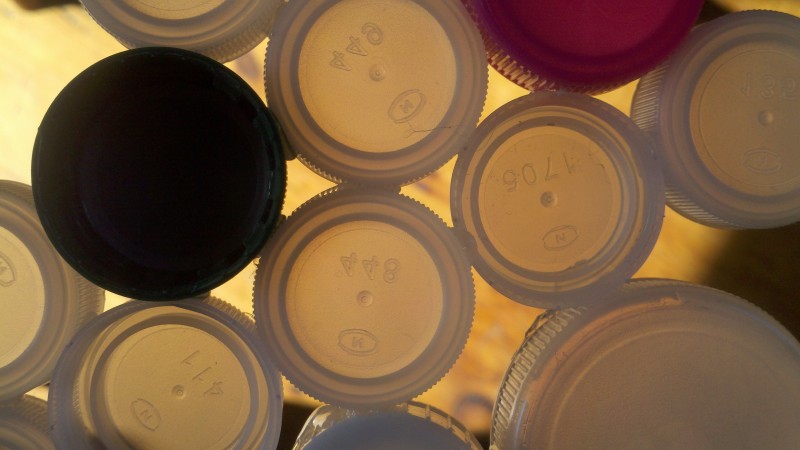Plastiscape
Nancy Kim

Display focused on a collection of plastic bottle caps in MIT/Cambridge community.
Plastic bottle caps are made of polypropylene and are rarely recycled in the United States. This is to serve as an informative display commenting on consumption and petroleum products in relationship to public health and the environment.
Gone are the days when we thought “throwing it in the ocean” took all of our clutter away. This throw-away culture that spawned during Industrialization has had detrimental effects on the natural environment, human health, and the lives of mammals and aquatic organisms. Evidence from the Algalita Marine Research Institute (1997) indicates that there exists a plastic island twice the size of Texas made up of accumulated plastic trash. They also show that 100,000 mammals die from the ingestion of small plastic debris in the North Pacific Gyre alone. Plastic caps are continually mistaken as food by birds and are among the number one items found in them. The AMRF also show that some plastics are high absorbers of “toxic chemicals such as PCBs, DDE,and nonylphenols and may serve as a transport medium to marine organisms who ingest them.” Ultimately, this reality is affecting our food chain and could get worse.
Plastic is ideal for products that require material longevity, but should products that are designed to be thrown away (such as plastic beverage bottles, caps, bags, and packaging) be made to last an eternity?
Installation
This project is a classification of caps collected from various sources in an attempt to raise awareness on the complexities of plastic.
1. Delta Airlines
2. Two male young professionals
3. Bio Stem Cell Research Company
4. Cause + Effect Productions
5. The Charles River
6. 3-Person Family
7. Couple
8. MIT Steam Cafe garbage bins
9. Studio 3-415, MIT
Kinds of plastic
No. 1: Polyethylene Terephthalate (PET, PETE).
No. 2: High-Density Polyethylene (HDPE).
No. 3: Polyvinyl Chloride (PVC, vinyl).
No. 4: Low-Density Polyethylene (LDPE).
No. 5: Polypropylene (PPSOE).
No. 6: Polystyrene (PS).
No. 7: Other: when package is made with a resin other than the six listed above, or is made of more than one resin and used in a multi-layer combination.
Special Thanks: Michael Hayes, S.Y. Bae, S. Lee, Steve Lanou, Aaron Thom, Strategostructure Studiomates, Leslie Yoon, Cause and Effect Productions, K.Min, Trash Patch.
»
Comments RSS feed for this post.